#gettysburg national cemetery
Text
...That we here highly resolve that these dead shall not have died in vain...
One hundred and sixty years ago today, on November 19, 1863, President Abraham Lincoln traveled to the Civil War battlefield in Gettysburg, Pennsylvania, to participate in the dedication of a Union war cemetery. He had been invited as an afterthought—the keynote speaker, Edward Everett of Massachusetts, spoke for two hours before the President took the podium. President Lincoln spoke for less than two minutes. The speech was so short that the photographer who had planned to take a picture of Lincoln giving the address was only able to take the photograph as the President returned to his seat. Everett later wrote a letter to Lincoln saying that, "I wish that I could flatter myself that I had come as near to the central idea of the occasion in two hours as you did in two minutes."
#gettysburg address#gettysburg national cemetery#civil war#president of the united states#abraham lincoln#video#repost
9 notes
·
View notes
Text
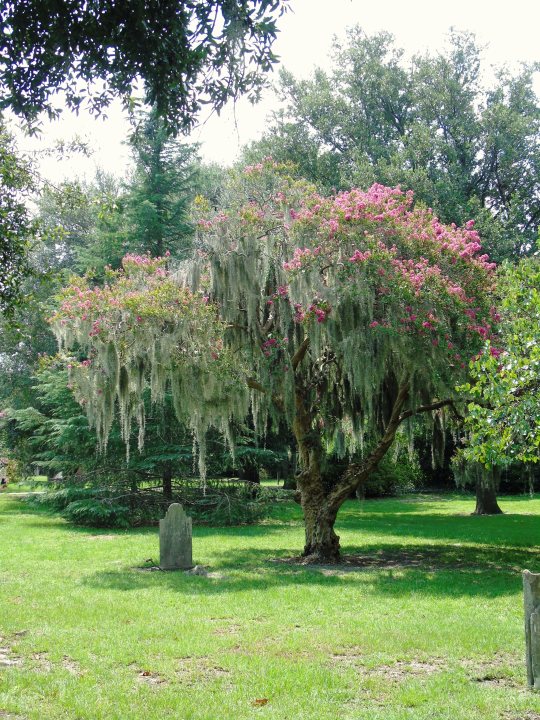


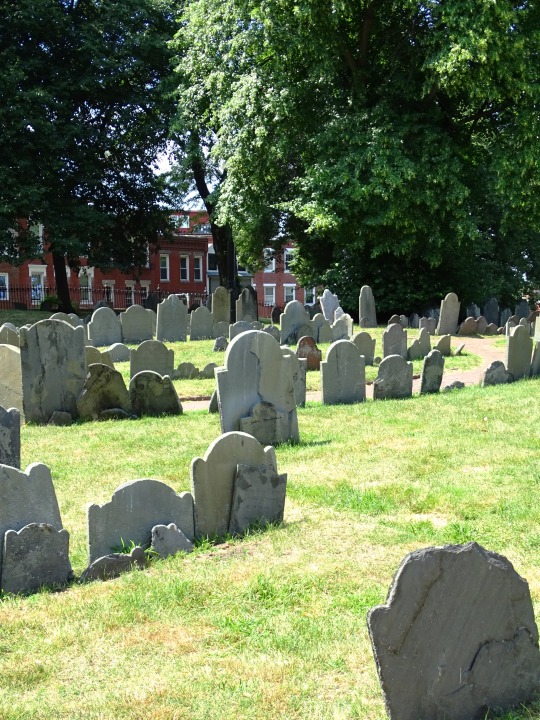

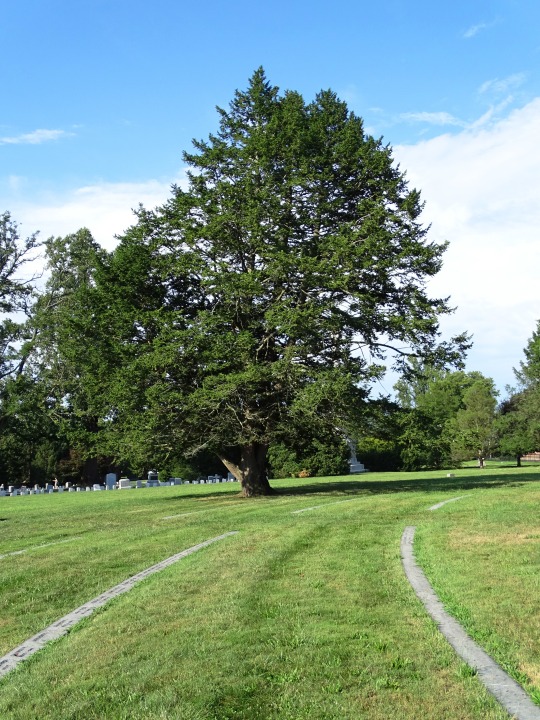

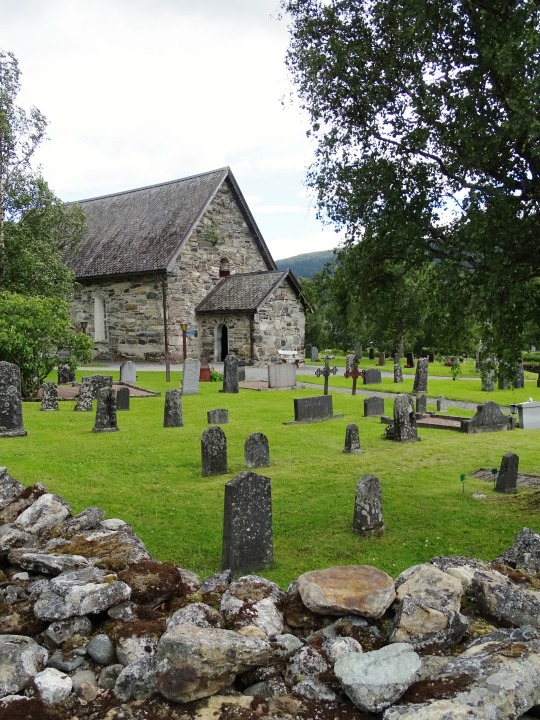

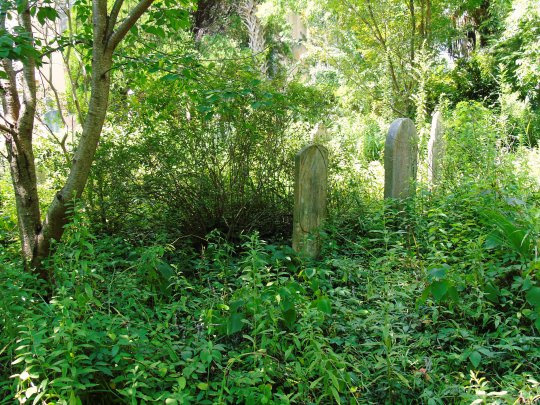
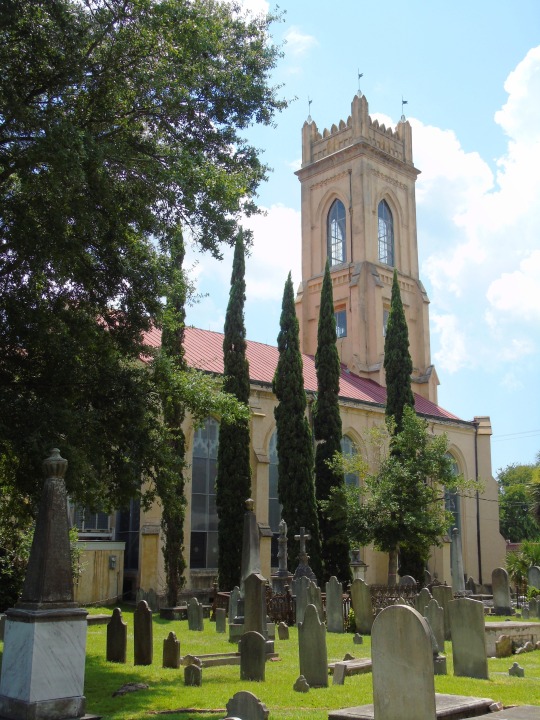


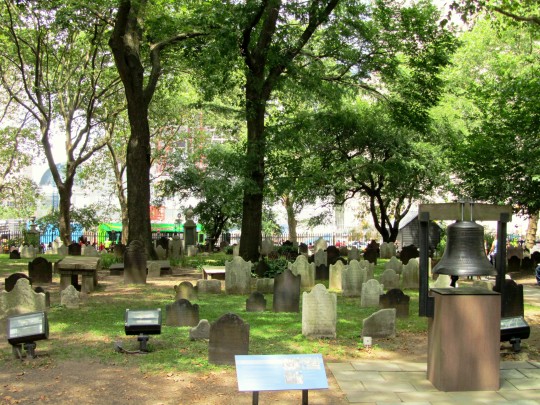
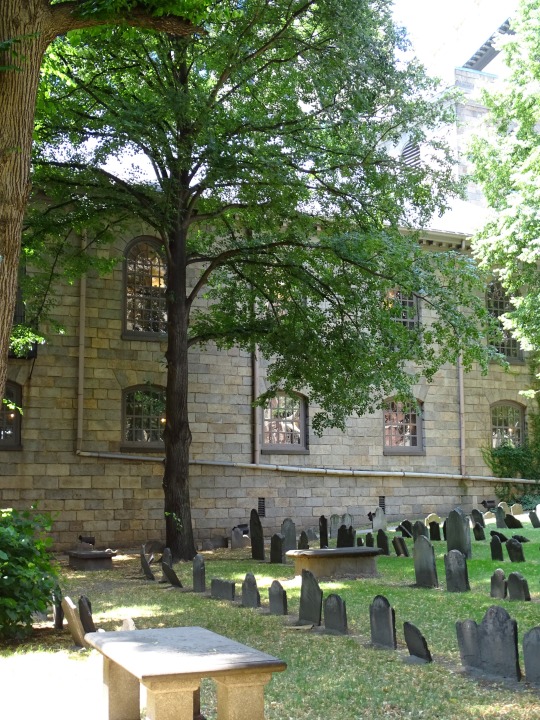


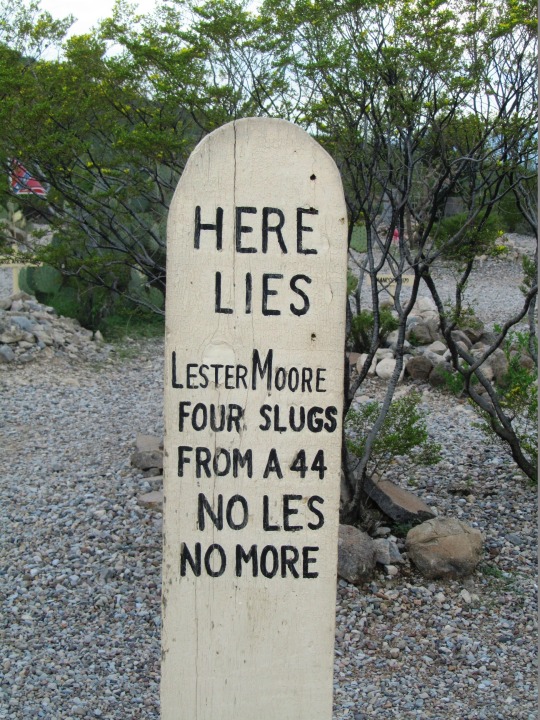
Visit A Cemetery Day
Visit a Cemetery Day is a holiday that takes place every last Sunday in October. This year it falls on October 29. It is a day that allows us to honor the life of those who are gone. It is a chance to admit that, though they’re no longer physically with us, we still have them in our memories. It is a day when people go to the gravesite of friends and families who have left this world. On Visit a Cemetery Day, many choose to redecorate the gravesite of their loved ones. Many other activities give life to this holiday as well.
History of Visit A Cemetery Day
The culture of visiting gravesites and cemeteries predates most modern cultures, and it has been a way of life of humans since ancient times. A cemetery is more than a collection of gravesites and headstones. It is a place for deep reflection and connecting. It is not a lonely place where you can’t learn anything. It is a place of meditation, where you get to reflect on the memories you shared with those who have left us. The headstones also contain messages about the people we cherish and are worth reading. It is usually a wisdom quote that captures the essence of life, and it can be inspiring.
Visit a Cemetery Day reminds us that we’re not entirely disconnected from those who have left this physical world. The memories they left remain with us, and we can cherish them as much as possible. We can also reminisce on the times we spent together and how they have helped us get to where we are today.
Visiting a cemetery is also sometimes a gathering affair where people come together to honor the departed. This is done for soldiers who died in battle and also victims of casualties. The essence of it all is to remember them for the good they’ve done and honor the memory we have of them. This is why cemeteries are generally known as memorial parks, emphasizing the memories left behind by the dead.
Visit A Cemetery Day timeline
7 A.D. Burial Under Church Control
The church handles burial services and takes charge of burying the dead in Europe.
1797 First Chartered Burial Ground
The State of Connecticut incorporates a new cemetery in New Haven.
1800s Company and Municipally Owned
Cemeteries not owned by the church become more popular and accepted.
1860s Tribute to Fallen Soldiers
Americans visit the graves of fallen soldiers to place flowers and honor them.
Visit A Cemetery Day FAQs
Can you observe from a private gravesite?
Yes, you can observe this solemn holiday from a private graveyard.
How can you decorate a gravestone?
The gravestone can have carvings and inscriptions. Also, you can bring flowers occasionally to beautify the place.
What if the gravesite is far away?
You can observe a solemn time with friends to honor the dead, even when their resting place is far away.
How to Observe Visit A Cemetery Day
Visit the burial place of loved ones
Decorate the gravesites
Have a picnic with family and friends
On this solemn holiday, you can visit the burial place of dear ones who have departed. It helps us honor the memory they left behind.
You can bring flowers and other ornaments to beautify the burial place of the departed. By doing so, we remind ourselves that the dead deserve respect too.
You can have a quiet time with family and friends. It is a time to reflect and share stories about those who have left us.
5 Facts About Cemeteries
Epitaphs are a great source of knowledge
Most gravestones face east
Meaningful carvings are common
Cemeteries are sometimes multipurpose
Number of graves on an acre
Apart from being words of hope, epitaphs are also known to convey vital information.
Many gravestones in the world face east, mostly to acknowledge the rising sun.
Several gravestones have very meaningful carvings.
Sometimes, cemeteries feature other things like art, historical artifacts, and museums.
An acre of land can occupy close to 2,000 graves.
Why Visit A Cemetery Day is Important
To honor the dead
Understand life better
Helps to remember the dead
On this special holiday, we get to honor those who have gone before us. It is good to cherish the memories they left behind.
When we visit the cemetery, we get a better insight into life and appreciate that we must cherish it.
On Visit a Cemetery Day, we get to recall the times we spent with departed loved ones. We remember all the things they’ve done for us and the memories we shared.
Source
#Tolomato Cemetery#Huguenot Cemetery#Åre Old Church#Sweden#Colonial Park Cemetery#Savannah#Charleston#St. Philips Church Episcopal West Cemetery#Unitarian Church Cemetery#USA#Boothill Graveyard#Tombstone#Arlington National Cemetery#Boston#Salem#Granary Burying Ground#Old Burying Point Cemetery#Gettysburg National Cemetery#St. Augustine#travel#last Sunday in October#29 October 2023#Visit A Cemetery Day#VisitACemeteryDay#cityscape#original photography
11 notes
·
View notes
Text

Remember the Titans (2000, Boaz Yakin)
18/11/2022
Remember the Titans is a 2000 film directed by Boaz Yakin, starring Denzel Washington, which narrates the true events of the american T.C. Williams High School in Alexandria, Virginia.
In 1981, a group of former American football coaches and players attend a funeral. Nearly ten years earlier, in the summer of 1971, at the newly integrated T.C. Williams High School in Alexandria, Virginia, Herman Boone, a black coach who was supposed to lead the black high school football team, is assigned to the coaching staff under current white coach Bill Yoast, who previously led the white high school and was named to the Virginia High School Hall of Fame.
On August 15, the players reunite and travel to Gettysburg College, where their training takes place. However, through vigorous training and rigorous athletic training on Boone's part, which includes a morning run to Gettysburg National Cemetery a motivational speech: the team achieves racial harmony and emerges a unified team.
Ten years later, Bertier dies in a car accident caused by a drunk driver after winning the gold medal in the shot put at the Paralympic Games. It is the revelead that it is his funeral attended by the former coaches and players, where Julius, while holding Bertier's mother's hand, leads the team in a sad rendition of "Na Na Hey Hey Kiss Him Goodbye". Coach Boone coached the Titans for five more seasons, and later retired, and Coach Yoast assisted Boone for four more years, retiring from coaching in 1990.
The film was released in US cinemas on September 29, 2000 and in Italian cinemas on April 13, 2001.
The direction of the Italian dubbing is by Giorgio Piazza, with dialogues by Mauro Trentini, on behalf of SEFIT-CDC.
The film was shot a Druid Hills High School, near Atlanta, Georgia.
The summer internship scenes were filmed at Berry College, Mount Berry, Georgia.
The film's premiere was held at the Rose Bowl Stadium in Pasadena, California.
#remember the titans#film#2000#Boaz Yakin#denzel washington#american football#Alexandria Virginia#1981#1971#TC Williams High School#virginia#Herman Boone#Bill Yoast#Gettysburg College#Gettysburg National Cemetery#shot put#paralympic games#Na Na Hey Hey Kiss Him Goodbye#1990#americans#italy#Direttore del doppiaggio#Giorgio Piazza#Dialoghista#CDC Sefit Group#atlanta#georgia#Mount Berry#rose bowl#Pasadena California
4 notes
·
View notes
Text
Trod hallowed ground as you immerse yourself in history at Gettysburg, PA
History is everywhere in Gettysburg. You can’t avoid it, but that’s the point. The cannons, monuments, statues, cemeteries…they’re all here as lasting reminders of courage and sorrow. And most importantly, they show us where we’ve come from and just how far we’ve yet to go.
In this quaint south-central Pennsylvania town, eighty miles from our nation’s capital, two armies clashed on three…

View On WordPress
#Debbie Stone#Gettysburg#Gettysburg National Cemetery#Jennie Wade House Museum#Lincoln#Percherons#Put a pin in it!#Shriver House Museum#Victorian Carriage Company
2 notes
·
View notes
Text
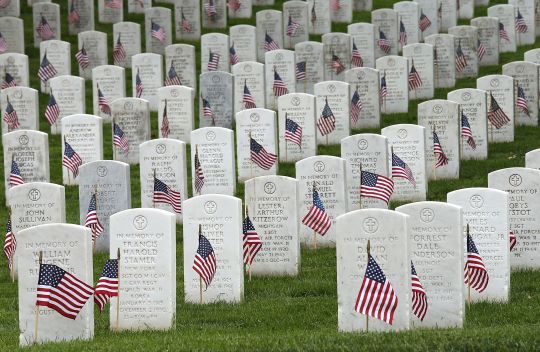
Arlington

Gettysburg National Cemetery
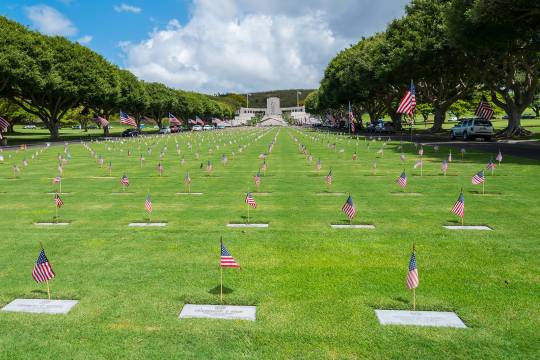
National Cemetery of the Pacific The Punchbowl

American Cemetery Normandy

Netherlands American Cemetery Margraten
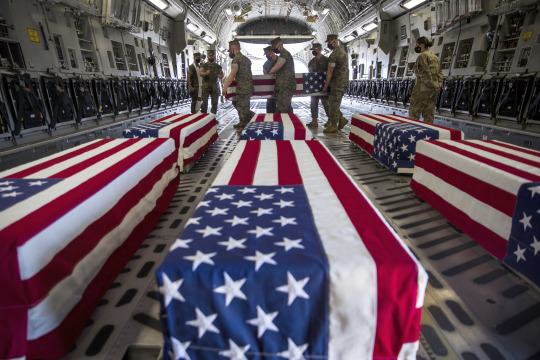
The flag covered caskets of brothers and sisters returning home through Dover.
This is a representation of just a fraction of the cost of our freedom. Our liberty was purchased at too high a price to surrender it to any agenda or special interest.
177 notes
·
View notes
Note
Out of curiosity, do you have any suggestions about anything or any place in Gettysburg that you think one have to do if one only have a short trip?
Gosh, yes, I have Opinions(TM). Here I'll do my best to put together a guide for a casual tourist who has limited time.
Let's start with the visitor center. There are pros and cons—I think the interpretation is decent, and it's clearly been updated within the last 5ish years. It's more middle of the road than I personally would like it to be, but it's a National Park so they're limited in what they can say. The museum does a good job talking about the experiences of civilians (including free Black people) before, during, and after the battle. They also have some new signs up around the town to talk about Black experiences.
Cons of the visitor center: I do not like the museum design. It's very text heavy, and I found myself getting fatigued trying to pay attention to everything. There was not enough seating, although I remember the the space being maneuverable for a wheelchair user. It's very dark and needs more lighting. They also have a lot of audio/video elements, and the sound design isn't good, so it bleeds into other areas of the space with several sounds overlapping.
Gettysburg Visitor Center Museum: take a quick walk through and pay attention to what interests you. Skip the cyclorama and the intro video. There are scheduled ranger talks that could be good but I haven't been to them.
Guided bus tour: save your money and skip it. I went because I was interested in how they would tell the story of the battle, but it's not necessary to get a good feeling of the action or to get information. The National Parks Service has a free app with narrated driving tours. Do that instead. Here's a map from the NPS.

Downtown Gettysburg: Very strange. Highly touristy, and almost every business has a battle-themed name. There are some cute local restaurants, but I wouldn't spend too much time there.
Sights to See: if you have a limited amount of time, here are the places I would most recommend visiting.
The National Cemetery. This is where Lincoln gave his Gettysburg address, which kicks off memorialization at Gettysburg and is part of what leads Gettysburg to become the center of Civil War memory making (this is stop 16 on the driving tour).
Eternal Light Peace Memorial. Not so much for the memorial itself, because it stands for the 'forgive and forget' model of remembering the Civil War, which neglects the experience of Black people during the war and Reconstruction. The park has put up signs discussing why this is problematic, and it does a good job discussing the issue. It also has a good view (stop 2 on the driving tour).
Devil's Den. It's iconic. It's a beautiful natural formation. There's something about that cluster of boulders that captures the imagination. It's a little out of the way from some of the other locations, but go if you can.
Little Round Top. LTR is currently closed for maintenence, but it should be open in 2024. It's a great place to get a view of the whole battlefield, and it's the site of Joshua Chamberlain's iconic bayonet charge (featured in Gettysburg the movie). Here's a NPS ranger giving a virtual tour. Here's a view from LRT, which also happens to be my computer background...

Other Resources:
Gettysburg ranger programs
Information about the 160th anniversary
Historic and modern image gallery
youtube
Gettysburg is beautiful, but the tourism industry has definitely left its mark. So much effort has gone into creating a very curated experience for visitors, but don't be afraid to do your own thing. Visit sites out of order. Go with what speaks to you. Remember to be respectful.

-Reid
29 notes
·
View notes
Text

Dead #PresidentsDay Abraham Lincoln #BlackHistoryMonth #AbrahamLincoln became the #UnitedStates’ 16th President in 1861, issuing the #EmancipationProclamation that declared forever free those slaves within the Confederacy in 1863.
Lincoln warned the South in his Inaugural Address: “In your hands, my dissatisfied fellow countrymen, and not in mine, is the momentous issue of civil war. The government will not assail you…. You have no oath registered in Heaven to destroy the government, while I shall have the most solemn one to preserve, protect and defend it.”
Lincoln thought secession illegal, and was willing to use force to defend Federal law and the Union. When Confederate batteries fired on Fort Sumter and forced its surrender, he called on the states for 75,000 volunteers. Four more slave states joined the Confederacy but four remained within the Union. The Civil War had begun.
The son of a Kentucky frontiersman, Lincoln had to struggle for a living and for learning. Five months before receiving his party’s nomination for President, he sketched his life:
“I was born Feb. 12, 1809, in Hardin County, Kentucky. My parents were both born in Virginia, of undistinguished families–second families, perhaps I should say. My mother, who died in my tenth year, was of a family of the name of Hanks…. My father … removed from Kentucky to … Indiana, in my eighth year…. It was a wild region, with many bears and other wild animals still in the woods. There I grew up…. Of course when I came of age I did not know much. Still somehow, I could read, write, and cipher … but that was all.”
Lincoln made extraordinary efforts to attain knowledge while working on a farm, splitting rails for fences, and keeping store at New Salem, Illinois. He was a captain in the Black Hawk War, spent eight years in the Illinois legislature, and rode the circuit of courts for many years. His law partner said of him, “His ambition was a little engine that knew no rest.”
He married Mary Todd, and they had four boys, only one of whom lived to maturity. In 1858 Lincoln ran against Stephen A. Douglas for Senator. He lost the election, but in debating with Douglas he gained a national reputation that won him the Republican nomination for President in 1860.
As President, he built the Republican Party into a strong national organization. Further, he rallied most of the northern Democrats to the Union cause. On January 1, 1863, he issued the Emancipation Proclamation that declared forever free those slaves within the Confederacy.
Lincoln never let the world forget that the Civil War involved an even larger issue. This he stated most movingly in dedicating the military cemetery at Gettysburg: “that we here highly resolve that these dead shall not have died in vain–that this nation, under God, shall have a new birth of freedom–and that government of the people, by the people, for the people, shall not perish from the earth.”
Lincoln won re-election in 1864, as Union military triumphs heralded an end to the war. In his planning for peace, the President was flexible and generous, encouraging Southerners to lay down their arms and join speedily in reunion.
The spirit that guided him was clearly that of his Second Inaugural Address, now inscribed on one wall of the Lincoln Memorial in Washington, D. C.: “With malice toward none; with charity for all; with firmness in the right, as God gives us to see the right, let us strive on to finish the work we are in; to bind up the nation’s wounds…. ”
On Good Friday, April 14, 1865, Lincoln was assassinated at Ford’s Theatre in Washington by John Wilkes Booth, an actor, who somehow thought he was helping the South. The opposite was the result, for with Lincoln’s death, the possibility of peace with magnanimity died.
10 notes
·
View notes
Text



The Battle of Gettysburg's 160th Anniversay - Day 3
July 3
"What happens here this day
The fate of this nation
In the balance it will hang
Consumed with the pain
The courage of the blue
The valor of the grey
So very sad but true
Consumed with the pain"
- High Water Mark, Iced Earth
On This Day:
The Largest Artillery Bombardment in the American Continent
The Confederate Attack Advances to Cemetery Ridge
The High-Water Mark of the Confederacy
#hoofclid#nox-lunarwing#ama-artistic#nopony-ask-mclovin#asktwilighteclipse#techbro-arts#ask-healthy-light#MLP#My Little Pony#Gettysburg#Battle of Gettysburg#Gettysburg 160#Gettysburg 160th Anniversary
13 notes
·
View notes
Text
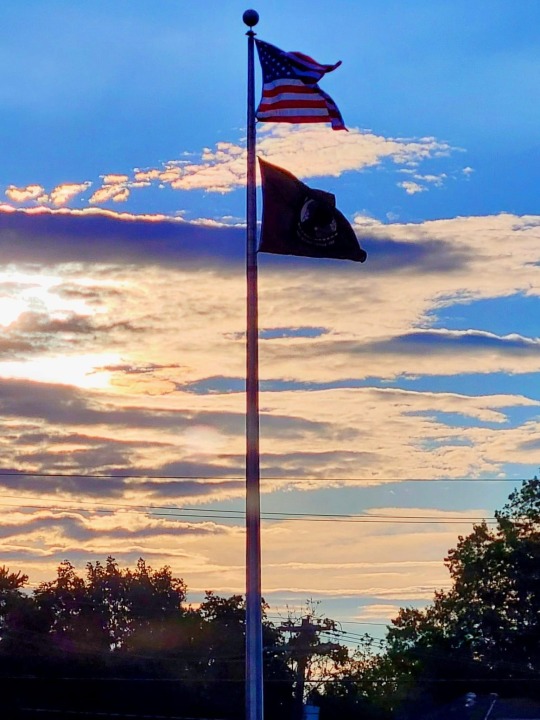
National Military Cemetery
Gettysburg Pennsylvania
6 notes
·
View notes
Text
November 19, 2023
HEATHER COX RICHARDSON
NOV 19, 2023
For three hot days, from July 1 to July 3, 1863, more than 150,000 soldiers from the armies of the United States of America and the Confederate States of America slashed at each other in the hills and through the fields around Gettysburg, Pennsylvania.
When the battered armies limped out of town after the brutal battle, they left scattered behind them more than seven thousand corpses in a town with fewer than 2,500 inhabitants. With the heat of a summer sun beating down, the townspeople had to get the dead soldiers into the ground as quickly as they possibly could, marking the hasty graves with nothing more than pencil on wooden boards.
A local lawyer, David Wills, who had huddled in his cellar with his family and their neighbors during the battle, called for the creation of a national cemetery in the town, where the bodies of the United States soldiers who had died in the battle could be interred with dignity. Officials agreed, and Wills and an organizing committee planned an elaborate dedication ceremony to be held a few weeks after workers began moving remains into the new national cemetery.
They invited state governors, members of Congress, and cabinet members to attend. To deliver the keynote address, they asked prominent orator Edward Everett, who wanted to do such extensive research into the battle that they had to move the ceremony to November 19, a later date than they had first contemplated.
And, almost as an afterthought, they asked President Lincoln to make a few appropriate remarks. While they probably thought he would not attend, or that if he came he would simply mouth a few platitudes and sit down, President Lincoln had something different in mind.
On November 19, 1863, about fifteen thousand people gathered in Gettysburg for the dedication ceremony. A program of music and prayers preceded Everett’s two-hour oration. Then, after another hymn, Lincoln stood up to speak. Packed in the midst of a sea of frock coats, he began. In his high-pitched voice, speaking slowly, he delivered a two-minute speech that redefined the nation.
“Four score and seven years ago our fathers brought forth on this continent, a new nation, conceived in Liberty, and dedicated to the proposition that all men are created equal,” Lincoln began. While the southern enslavers who were making war on the United States had stood firm on the Constitution’s protection of property—including their enslaved Black neighbors—Lincoln dated the nation from the Declaration of Independence.
The men who wrote the Declaration considered the “truths” they listed “self-evident”: “that all men are created equal, that they are endowed by their Creator with certain unalienable Rights, that among these are Life, Liberty and the pursuit of Happiness.” But Lincoln had no such confidence. By his time, the idea that all men were created equal was a “proposition,” and Americans of his day were “engaged in a great civil war, testing whether that nation, or any nation so conceived and so dedicated, can long endure.”
Standing near where so many men had died four months before, Lincoln honored “those who here gave their lives that that nation might live.”
He noted that those “brave men, living and dead, who struggled here, have consecrated” the ground “far above our poor power to add or detract.”
“It is for us the living,” Lincoln said, “to be dedicated here to the unfinished work which they who fought here have thus far so nobly advanced.” He urged the men and women in the audience to “take increased devotion to that cause for which they gave the last full measure of devotion” and to vow that “these dead shall not have died in vain—that this nation, under God, shall have a new birth of freedom—and that government of the people, by the people, for the people, shall not perish from the earth.”
[Image of President Abraham Lincoln at Gettysburg, center-left, with his head tilted downward. Work is in the U.S. public domain, obtained here from Wikimedia Commons.]
[LETTERS FROM AN AMERICAN
HEATHER COX RICHARDSON]
3 notes
·
View notes
Text
ARMISTICE DAY
Please take the time today to remember those that have given the ultimate sacrifice to protect and ensure the freedoms you enjoy today. World War I (the 'War to End All Wars') celebrated a cease fire on this day, November 11, 1918 at 11:11am, and yet still today active land mines from that horrific conflict lie in wait, still fighting that conflict.
I have been to the Verdun valley in France, where over 1.2 million died and to Fort Douaumont, which has now become a museum and a memorial to viewable remains of 350,000 unknown soldiers. Think about that for a minute. Once you've seen it, you will never forget it.
I have walked the remains of the trenches in the Argonne Forest where my great uncle Paul fought, and witnessed the eroded craters of artillery explosions and the bleached remains of soldiers that perished there and are still entombed there.
I have visited the American cemeteries in eastern France (which are actually US soil), visited Arizona hero Frank Luke's unassuming grave, and bowed my head in silent prayer.
I reflected on three patriots without whose efforts this nation may not have been forged. Abraham Woodhull (aka Samuel Culper), Anna Smith Strong and Caleb Brewster provided Washington with intelligence (the Culper Spy Ring) on British ship and British/Hessian troop movements that allowed decisive victories at Trenton (Crossing of the Delaware) and others. They did what was necessary and risked their lives to provide support to the concept of a new nation. I drove to Setauket, Long Island not long ago to visit their graves and pay my respects. I was honored in their presence. It made me ask the question: What would you risk to ensure freedom and liberty for yourself and your family?
I have been to the fortifications and ramparts of Fort Griswold in Groton, Connecticut where 88 militia volunteers, among them my children's great-great-great-great-great grandfather and his brothers and cousins, a Pequot Indian, and two free black men fought against British General Benedict Arnold's attack on Connecticut, September 6, 1781. During their surrender after hours of fighting against overwhelming odds, the British commander took American Colonel Ledyard's presentation sword of surrender and ran Ledyard through, then giving orders to execute everyone left alive. Their ancestor was badly wounded during the massacre and was carted off to a British prison ship of horrid condition.
During the decisive Battle of Yorktown and the surrender of the British and Lord Cornwallis on October 19, 1781, the battle cry was 'Remember Fort Griswold!'.
I have traveled to Dachau Concentration Camp, where those whose ideals, race or sexual preferences did not meet a ruling party's guidelines. My father was in the 20th Armored Division, 70th Armored Infantry as a medic, and was one of a handful of medics and soldiers that liberated Dachau. He personally witnessed the dead and dying, the buildings filled with heads, arms and legs. He saved hundreds there through medical attention without so much as a medal. It was the soldiers' duty. I still have the worn 48-star flag that he carried throughout Europe.
I've been to Anne Frank's house in Amsterdam. When your rights and freedoms are taken, it was horrible to witness the lengths taken and necessary to simply remain alive and preserve your humanity.
I have been to the Alamo, and stood at the spot where Davy Crockett fell on March 6, 1836 to help secure independence for Texas; and touched the mock-marked scars of bullets from that day in the limestone blocks of the old mission.
I have felt the sorrow on the battlefields at Gettysburg, grieved in silence at Arlington Cemetery, paid respects at Grant's home and Lee's grave, let the cool breeze wash over me at Little Big Horn, anguished at Wounded Knee, and paid my respects to the end of an era at Skeleton Canyon in Arizona where Geronimo surrendered. I have been to Geronimo's final resting place at Fort Sill, Oklahoma, surrounded by his family; far from their home in Arizona and New Mexico.
My grandfather was drafted for WWII and served in the Army as well on the home front. My uncle fought in Italy with the 10th Mountain and survived Anzio.
I stood at the Berlin Wall and felt the pain and anguish of a nation and people when I placed my hand on its graffiti surface. I wept for joy when I learned the news it was torn down November 9, 1989. There was nothing 'cold' about that war... except that long expanse of grey concrete.
I remember personally seeing the passion Pat Tillman had for the game of football when he was playing for Arizona State University. That passion carried over into a starting position with the Arizona Cardinals, and after September 11, 2001, his country. Even though his death was a tragedy, he decided to leave behind a multi-million dollar contract to defend this country and its ideals. Grit. Honor.
About eight years ago, I was at Costco and struck up a conversation at lunch with 88 and 93-year-old WWII veterans. The younger man served in Luzon, Philippines, and the other in the 20th Armored Division, 14th Artillery. They were both excited to know that I knew the history of the 20th Armored Division intimately from my father. After lunch was over, I made sure to thank them for their service and sacrifice. And in doing so, no less than 10 other strangers suddenly walked up to thank them as well. I ran into the 20th Armored Division gentleman another time the following year and bought him a hot dog and soda and ate with him. And thanked him once again.
Remember the Veterans... not just today, but every day, and say THANK YOU to them for ensuring your freedom to express your voice, your opinions, and your liberty. Freedom is never free, and there will always be those wanting to control and purge your unalienable rights.
12 notes
·
View notes
Photo





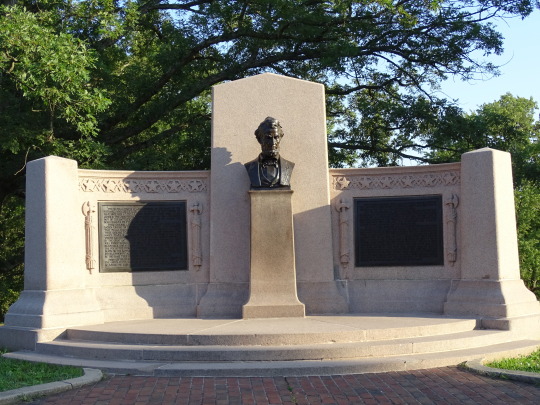
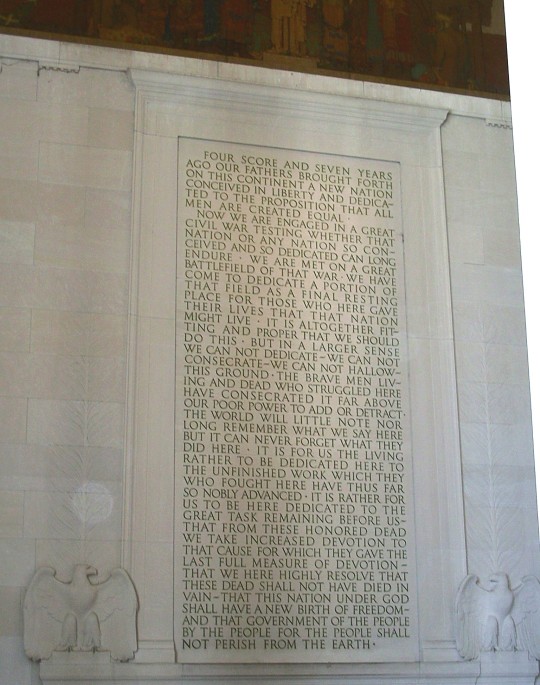



American Civil War: U.S. President Abraham Lincoln delivered the Gettysburg Address at the dedication ceremony for the military cemetery at Gettysburg, Pennsylvania on November 19, 1863.
#President Abraham Lincoln by Stanley J. Watts#American Civil War#vacation#Gettysburg National Military Park#Gettysburg Address#19 November 1963#Gettysburg Battlefield Historic District#anniversary#US history#travel#USA#original photography#Lincoln’s Gettysburg Address Memorial#US Civil War#Gettysburg National Cemetery#Soldiers' National Monument#Washington DC#Lincoln Memorial#US president#Daniel Chester French#tourist attraction#landmark
7 notes
·
View notes
Text
Shitty filming but Taps at Gettysburg National Soldiers Cemetery
Yes I am partially posting so I can send it to my datemate because I don’t have nitro
5 notes
·
View notes
Photo
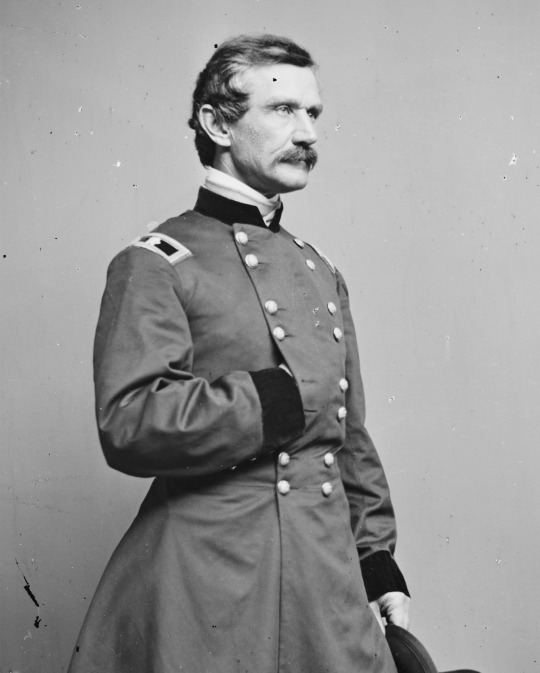

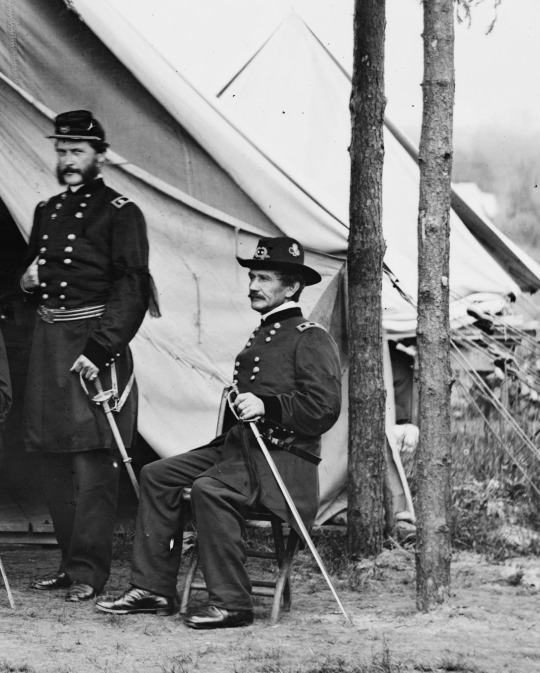
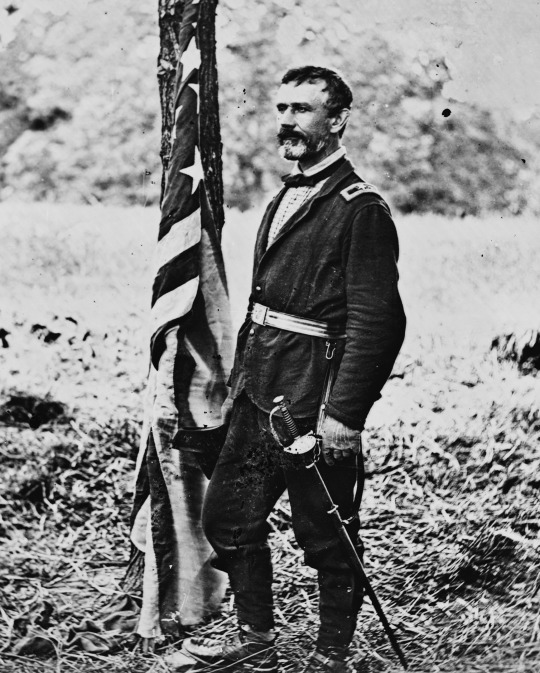
Andrew Atkinson Humphreys (November 2nd, 1810 - December 27th, 1883) was born to a family prominent in naval architecture. His grandfather, Joshua, designed the USS Constitution. He graduated from West Point in 1831, ranked 13 out of 33 in his class. He saw combat in the artillery in the Seminole Wars and then garrison duty. he resigned in 1836 to become a civil engineer for the government. Two years later, he was back in the army as a 1st lieutenant in the Topographical Engineers and worked on bridges, harbors, and coastal and railroad surveys. He spent much of the next 30 years as a civil engineer in the Army, with his service involving topographical and hydrological surveys of the Mississippi River Delta.
At the outbreak of the Civil War, H
Humphreys was promoted to major and became the Chief Topographical Engineer for Major Gen. George B. McClellan's in the Army of the Potomac. Initially involved in planning the defenses of Washington, D.C., by March 1862, he shipped out with McClellan for the Peninsula Campaign. He was promoted to Brigadier General of volunteers and on September 12, assumed command of the new 3rd Division in the V Corps of the Army of the Potomac. He led the division at Antietam and Fredericksburg.
Although respected by his men for his bravery under fire, Humphreys was not well liked by them. In his mid-fifties, they considered him an old man, despite his relatively youthful appearance. He was a taskmaster and strict disciplinarian.
At Chancellorsville, his division did little, principally because most of his soldiers were near the ends of their enlistments.
On May 23, 1863, Humphreys was transferred to the command of the 2nd Division in the III Corps, under Major Gen. Daniel E. Sickles. When Meade assumed command of the Army of the Potomac, he asked Humphreys to be his Chief of Staff, replacing Brigadier Gen. Daniel Butterfield, who was considered to be too close politically to the previous commander, Major Gen. Joseph Hooker. He declined the opportunity to give up his division command.
Humphreys' new division immediately saw action at Gettysburg where, on July 2, Sickles insubordinately moved his corps from its assigned defensive position on Cemetery Ridge. Assaulted by the division of Major Gen. Lafayette McLaws, his 2 brigades were demolished. He put up the best fight that could have been expected and was eventually able to reform his survivors on Cemetery Ridge, but his division and the entire corps were finished as a fighting force.
Humphreys was promoted to major general of volunteers and finally acceded to Major Gen. George G. Meade's request to serve as his Chief of Staff because he did not have much of division left to command. He served in that position through the Bristoe Campaign, Mine Run Campaign , and the Overland Campaign and the siege of Petersburg in 1864. In November 1864, he assumed command of the II Corps, which he led for the rest of the siege and during the Appomattox Campaign. On March 13, 1865, he was brevetted Brigadier General in the Regular Army for his actions at Fredericksburg and Gettysburg, and then to major general for Sayler's Creek. He helped pursue Gen. Robert E. Lee to Appomattox Court House and was there for Lee's surrender.
After the war, Humphreys commanded the District of Pennsylvania. He became a permanent Brigadier General and Chief of Engineers from 1866-79. He retired on June 30, 1879, serving during this period on lighthouse and other engineering boards.
Humphreys studied philosophy and was one of the incorporators of the National Academy of Sciences. His published works were highlighted by his 1867 "Report on the Physics and Hydraulics of the Mississippi River," which gave him considerable prominence in the scientific community. He also wrote personal accounts of the war, "From Gettysburg to the Rapidan" and "The Virginia Campaign of '64 and '65"
He is buried at the Congressional Cemetery in Washington, D.C..
#american civil war#andrew a humphreys#us civil war#civil war#us history#acw#i believe charles dana said that humphreys was the worse swearer in the army of the potomac#and by 'worse' that meant he did it A LOT lol#i was reading about a small interaction with him and sheridan and to be in that area...i can just imagine the swearing going on#amazing really
10 notes
·
View notes
Text
Today in History: Today is Sunday, Nov. 19, the 323rd day of 2023. There are 42 days left in the year.
On this date: In 2013, the Disney animated feature “Frozen” had its Hollywood premiere.
By The Associated Press
Today’s Highlight in History:
On Nov. 19, 1863, President Abraham Lincoln dedicated a national cemetery at the site of the Civil War battlefield of Gettysburg in Pennsylvania.
On this date:
In 1831, the 20th president of the United States, James Garfield, was born in Orange Township, Ohio.
In 1919, the U.S. Senate rejected the Treaty of Versailles by a vote of 55 in…

View On WordPress
0 notes
Text
Events 11.19 (before 1950)
461 – Libius Severus is declared emperor of the Western Roman Empire. The real power is in the hands of the magister militum Ricimer.
636 – The Rashidun Caliphate defeats the Sasanian Empire at the Battle of al-Qādisiyyah in Iraq.
1493 – Christopher Columbus goes ashore on an island called Borinquen he first saw the day before. He names it San Juan Bautista (later renamed again Puerto Rico).
1794 – The United States and the Kingdom of Great Britain sign Jay's Treaty, which attempts to resolve some of the lingering problems left over from the American Revolutionary War.
1802 – The Garinagu arrive at British Honduras (present-day Belize).
1808 – Finnish War: The Convention of Olkijoki in Raahe ends hostilities in Finland.
1816 – Warsaw University is established.
1847 – The second Canadian railway line, the Montreal and Lachine Railroad, is opened.
1863 – American Civil War: U.S. President Abraham Lincoln delivers the Gettysburg Address at the dedication ceremony for the military cemetery at Gettysburg, Pennsylvania.
1881 – A meteorite lands near the village of Grossliebenthal, southwest of Odesa, Ukraine.
1885 – Serbo-Bulgarian War: Bulgarian victory in the Battle of Slivnitsa solidifies the unification between the Principality of Bulgaria and Eastern Rumelia.
1911 – The Doom Bar in Cornwall claims two ships, Island Maid and Angele, the latter killing the entire crew except the captain.
1912 – First Balkan War: The Serbian Army captures Bitola, ending the five-century-long Ottoman rule of Macedonia.
1916 – Samuel Goldwyn and Edgar Selwyn establish Goldwyn Pictures.
1941 – World War II: Battle between HMAS Sydney and HSK Kormoran. The two ships sink each other off the coast of Western Australia, with the loss of 645 Australians and about 77 German seamen.
1942 – World War II: Battle of Stalingrad: Soviet Union forces under General Georgy Zhukov launch the Operation Uranus counterattacks at Stalingrad, turning the tide of the battle in the USSR's favor.
1942 – Mutesa II is crowned the 35th and last Kabaka (king) of Buganda, prior to the restoration of the kingdom in 1993.
1943 – Holocaust: Nazis liquidate Janowska concentration camp in Lemberg (Lviv), western Ukraine, murdering at least 6,000 Jews after a failed uprising and mass escape attempt.
1944 – World War II: U.S. President Franklin D. Roosevelt announces the sixth War Loan Drive, aimed at selling US$14 billion in war bonds to help pay for the war effort.
1944 – World War II: Thirty members of the Luxembourgish resistance defend the town of Vianden against a larger Waffen-SS attack in the Battle of Vianden.
1946 – Afghanistan, Iceland and Sweden join the United Nations.
0 notes